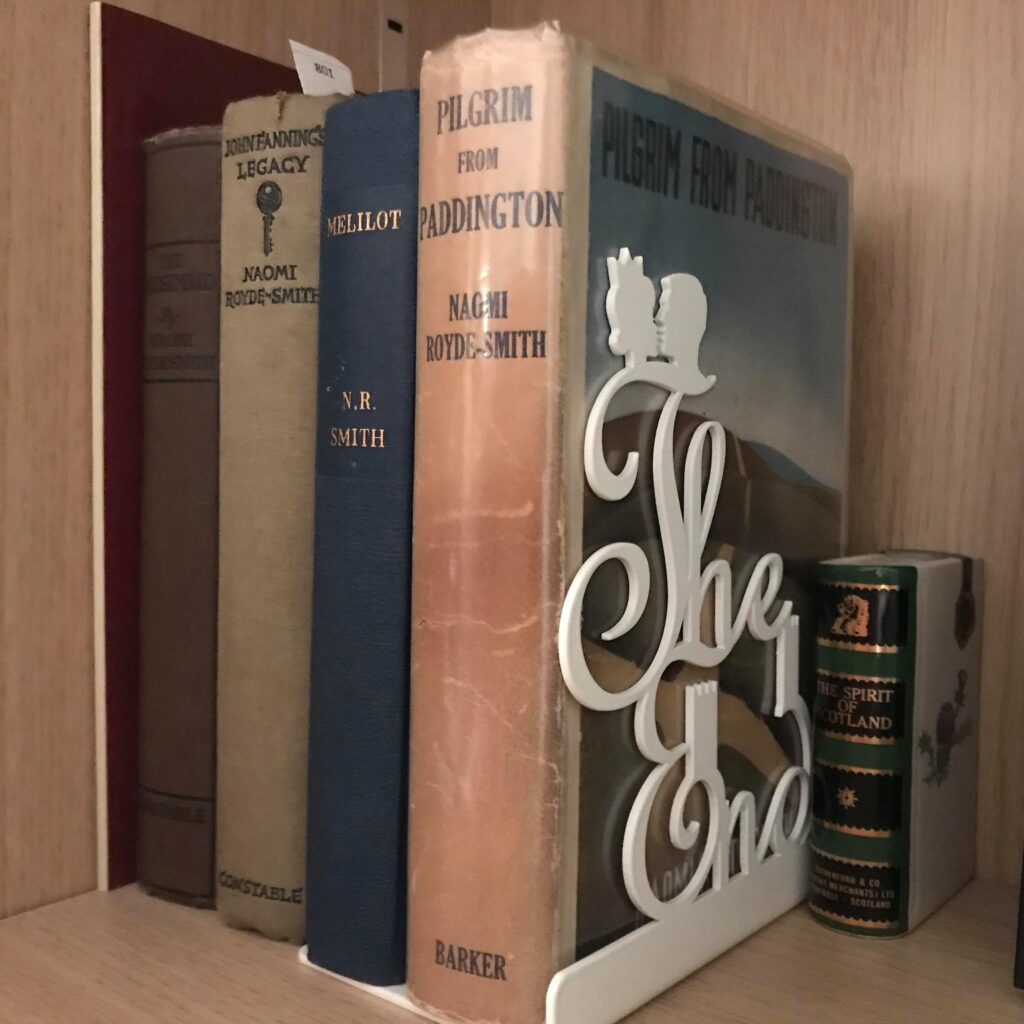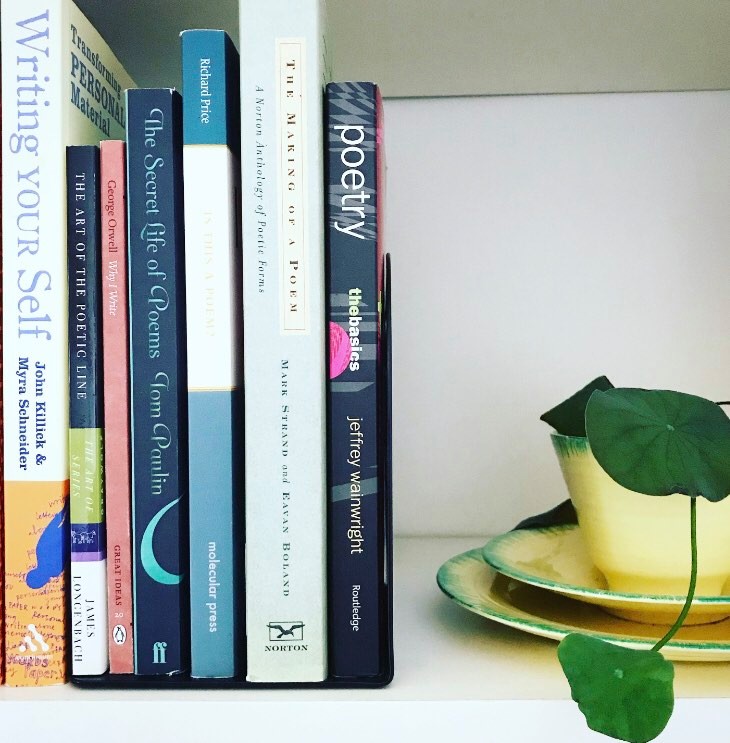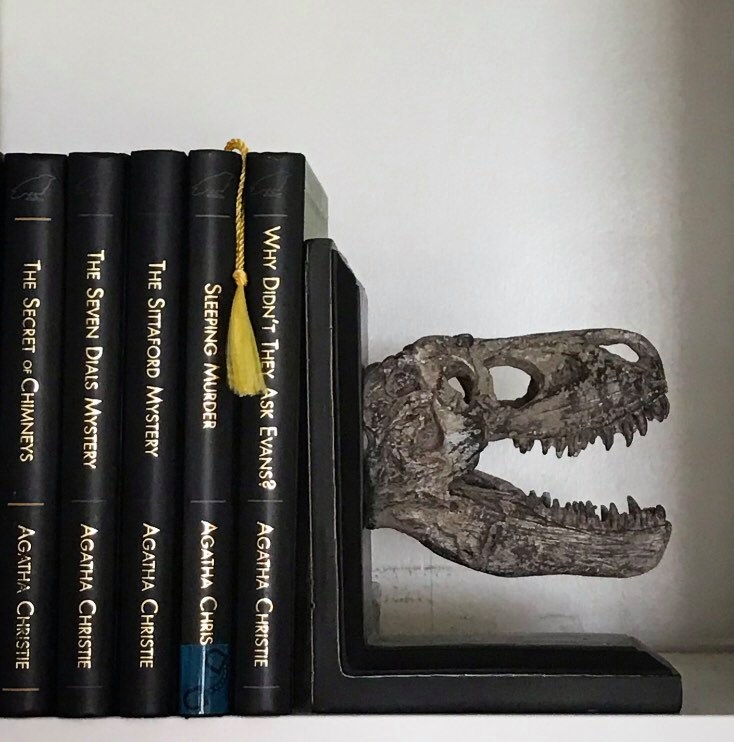
Over on KonMari.com it’s the end of the 8 Week Tidy Challenge, which included a day to organize books by category.
Day 45: Organize Books by Category
As a rule of thumb, store like items with like – and don’t disperse storage throughout the house. Books are a special case: Group these by category – cookbooks, coffee table books, novels, etc. – and store them where they make the most sense. If you like to read before falling asleep, designate a book zone in your bedroom – this way they won’t overwhelm your nightstand or end up in a stack on the floor.
– Marie Kondo.
Following this advice, there’s a link to a small selection of bookends on the KonMari shop. I thought now might be a good time to look at why bookends are useful not only in organization but also in preservation.
There’s lots of advice on the Internet about how to store books properly, and some of it is more reliable than others. The British Library has a good public advice page which keeps it simple and straightforward:
Store books on flat, smooth shelves, strong enough to support their weight. Ideally, books should not come into contact with unsealed wood which can release organic acidic vapours. Line shelves with acid free board to avoid this problem. Stand books vertically close together and if possible by size. Use bookends to prevent books collapsing.
Although it can look aesthetically pleasing to use different objects as bookends, remember that they are placed against the cover or board of the book, and a danger they can present is pushing unevenly against this. Uneven pressure can cause warping or, over time, even detachment of a board from the spine. This is also why we shelve books of a similar size together – tiny books next to large books can similarly put the spine and cover / board of the larger book under stress.
A good bookend lays flat against the book, and holds it upright. It should be pushed over far enough that the books stay in their positions but are not so tight that we put stress on any of them when we remove one from the shelf.
So, now we’ve established what good quality bookend looks like, let’s have some fun browsing for them. There are so many styles to choose from, there’s at least one to suit every home.
1. Keep it simple.
As a career-long librarian, I tend to go to library supply companies like Gresswell for basic bookends, but highstreet stationers like Rymans and Office Monster stock them too.

This style lifts the books up slightly, so don’t place a volume “half on and half off,” as that will damage it over time.
With “flex” systems, like Wickes’s, you need to make sure the bookends are always, always straight to avoid spring-loaded pressure.
2. Channel the past.
The book has been around for centuries, so there’s a wide range of antique and second-hand bookends out there to suit every budget.

I found my pair of plaster of Paris dinosaur bookends in Crystal Palace, which as well as being famous for its dinosaur park, is a significant place to me. They are both kitsch and historical, which fits my style perfectly.
Online sources of second-hand bookends include eBay, Etsy, and Preloved. Remember to look for flat backs though!
3. Be inspired by nature.
These days, everyone from Made in Design to Robert Dyas to small specialist stores seems to be offering bookends created from natural objects. There are obviously extra ethical concerns buying or collecting fossils.

On the desk in my study, I use a pair of agate bookends to hold books on which I’m working. They were a present from my parents, so they’re both functional and spark joy (as Marie Kondo says things should).
Most books are robust enough to be shelved in this type of desk arrangement for a short space of time.
You have to be careful standing books next to natural objects. Bringing things in from the garden can introduce extra moisture (even if they don’t feel damp to the touch) and even insect life. Never place books against unsealed wood, as it can release acid which is extremely damaging to books. Be careful with waxed items too – you don’t want anything to transfer onto the cover or board from your bookend.
4. Share your interests.
There are bookends themed to suit almost every hobby and interest you can imagine – #bookends on instagram includes dogs, and bicycles and Star Wars, and, of course, reading.

Here’s a pair of bookends posted by @mylesfromhome_uk that would suit someone with an interest in phrenology or tattoo art, or who simply loves vintage style in general.
The shop gives the advice, “They’re so unique that they’re never going to blend in, so instead create a conversation point!” That’s true for any bookend beyond the basic.
5. Put on a display.
Bookends aren’t the only support on the market. Sometimes you might want to highlight a book by having it face outwards.

I spotted this in the Publishers Association when I was attending a BIC course on ONIX metadata last November. As well as making me want to read Kingsford’s book (which I thoroughly enjoyed, by the way), it gave me something appropriate to look at in their reception area.
With this sort of display easel, it’s important that the book is supported but not forced – never try to squeeze a book onto a stand that is too small for it. Prefer one with a base, as pictured, to one with individual strips of metal or wood running under the book, as they will put pressure unevenly on the tail of the boards / cover. Recipe stands aren’t just for cookbooks! Some shelving systems, like Ikea’s Billy bookcases, are designed the option of display stands.
There’s so much more to be said about book supports – I’m aware of not even touching on bookends for children – but perhaps that’s a post for another day.